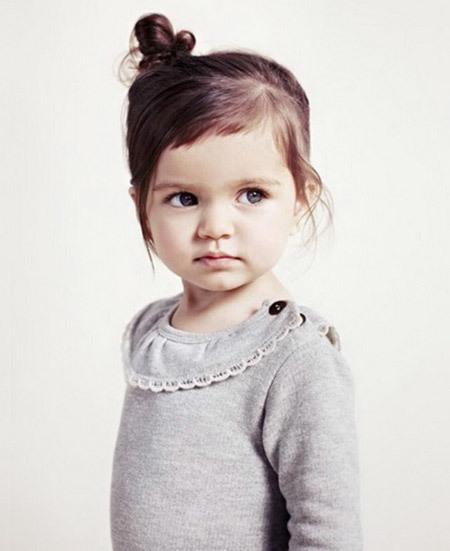Cheap Kids Haircuts Biography
Source(google.como.pk)
Keep an open mind. Ask a room full of fifty self-identifying Emos to define "Emo" and you'll probably get fifty completely different
answers. To a casual music fan over the last several decades, it can seem like the only thing that makes someone an Emo is the
ability to argue endlessly about the difference between indie emo, screamo, emopop, and emocore, none of which really matters to
the core or to real emo fans.
"Emo" has been used to describe an ever-changing variety of music over the course of thirty years. It's difficult to pin down, so don't try
to. The first criteria of being a good emo? Be inclusive. Don't get sucked into stupid arguments about what "real" emo is or isn't. That
doesn't make you an emo, that makes you a bully
"Emo" was first used to describe hardcore punk bands in the DC area that wrote more confessional and personal lyrics than more
traditional hardcore punk bands. Influenced by pioneering hardcore bands Minor Threat and Black Flag, bands like Rites of Spring
and Beefeater both wrote confessional and personal lyrics in their hardcore punk songs that led to the coining of the term "emotional
hardcore" and eventually "emo." So, originally, emo was a fairly small local scene in the DC area that gained some attention.
In the early 90s, bands like Jawbreaker and Sunny Day Real Estate began flying the emo flag, except these bands sound basically
nothing like early DC emo. Influenced by California pop punk, these bands have big catchy hooks and personal lyrics, writing songs
with sweeping structures and loads of melodrama
huge in the 2000s, with Victory Records bands like Taking Back Sunday, Thursday, and the Used patenting a particular brand of
"screamo" music that returned somewhat to emo's hardcore roots. It was big, loud, and extremely popular.[2]
Concurrently, Dashboard Confessional headlined a kind of emo that featured acoustic guitars and big choruses, but sounded more
like acoustic folk than Black Flag. These two different directions made it very difficult to categorize emo in, say, 2005.[3]
music has two things in common: big, sweeping, extremely melodramatic guitar-based music, either aggressive and harsh or acoustic
and gentle, that contain confessional or explicitly personal lyrics, often about heartbreak and loneliness. The Used doesn't sound much
like Death Cab for Cutie who doesn't sound anything like Jawbreaker. So what? They're all emo bands. Pick the sounds you like and
don't listen to what you don't like.
If you want to dress emo and listen to Sunny Day, go for it. If you also have Lady Gaga, Johnny Cash, and Cannibal Ox on your iPod,
that doesn't make you any less emo. A real "emo" is someone who is passionate and knowledgable about a diversity of music and
proud of their taste in it.
Much like the terms "hipster" or "punk" calling someone an "emo" is often used as an insult Its fairly common for young people--who
want desperately to belong somewhere--to try and jump on a "cool" bandwagon without really knowing anything about it. Being seen
as "fake" or as a "poseur" is at the heart of much emo controversy. That's why widespread violence against emo kids happens in
Mexico and Iraq. That's why endless YouTube comment streams are full of immature and shrill arguments about whether or not Bullet
for My Valentine is really emo or not.
While a guy with dark hair and guyliner listening to Dashboard Confessional in Columbus, OH might be considered emo by a lot of
people, the California blonde who surfs and listens to Dashboard Confessional might consider herself emo as well. Treat this as an
opportunity for everyone to appreciate the music.
For tips about music, definitions of "emo," and fashion, check out the guys and gals making the music for advice. See who they listen
to, who they're influenced by, what they read, and what they recommend. Learn straight from the source.
Like grunge or "jamband" music, most bands labeled as "emo" or "emocore" would probably take issue with the label anyway and
prefer to just be called a rock band. It's a sloppy term used by rock journalists and grabby fans to categorize completely different things
in completely different regions over different times. Worry less about whether something is "real emo" and worry more about whether
or not it's good.
Originally, emo was a small local scene that attracted national attention. In this way, a movement started that's now global. Get back in
touch with that original impulse by hanging around the local shows in your own backyard. It's one thing to go to the Warped Tour and
check out the national bands you hear, but it's another to check out and support local emo bands who are trying to get started.
Volunteer to help out at all-ages shows and DIY clubs to put on gigs. Hand out fliers and befriend other bands. Check out local zines
and participate in the scene
In general, the emo subculture values the arts. Painting, making music, writing, and expressing yourself creatively are all important
ways to participate in the emo subculture. Find a way to express yourself and devote your free time to perfecting your art. Write poetry
and turn your words into songs. Write reviews of emo music and start a music blog.
Emo is a subculture that prides itself on self-exploration, intelligence, and feeling.[4] Start reading up on contemporary and classic
emo novels and books:
Everybody Hurts: An Essential Guide to Emo Culture by Trevor Kelley and Leslie Simon
The Perks of Being a Wallflower by Stephen Chbosky
It's Kind of a Funny Story by Ned Vizzini
Eating Animals by Jonathan Safran Foer
The Catcher in the Rye by J.D. Salinger
The Razor's Edge by W. Somerset Maugham
Cheap Kids Haircuts

Cheap Kids Haircuts

Cheap Kids Haircuts

Cheap Kids Haircuts

Cheap Kids Haircuts

Cheap Kids Haircuts

Cheap Kids Haircuts

Cheap Kids Haircuts

Cheap Kids Haircuts

Cheap Kids Haircuts










